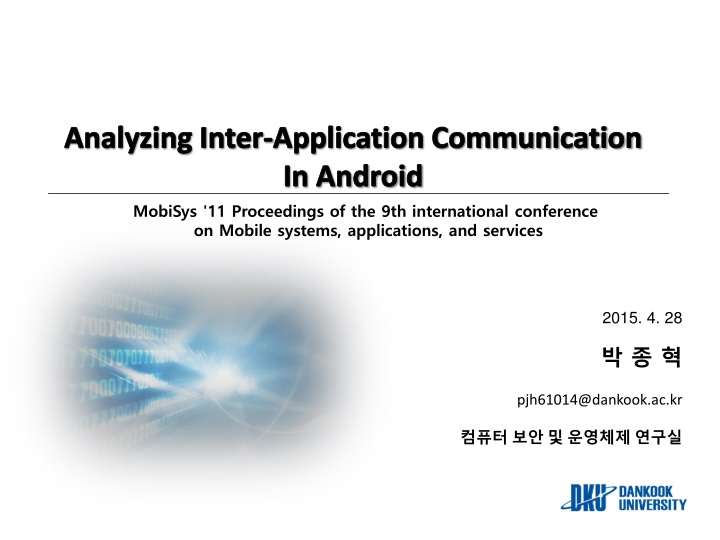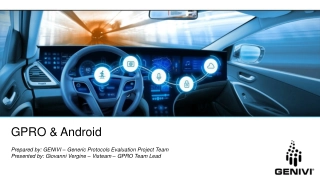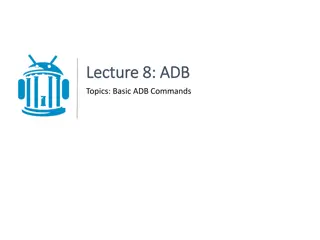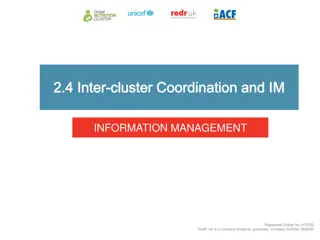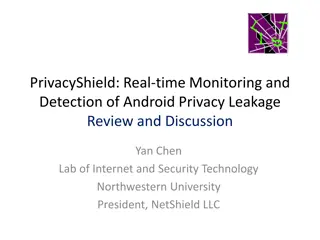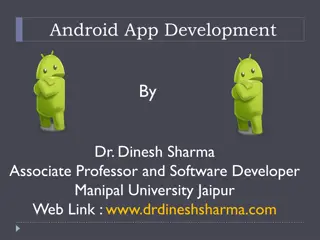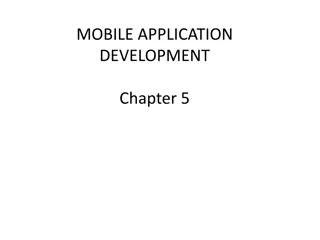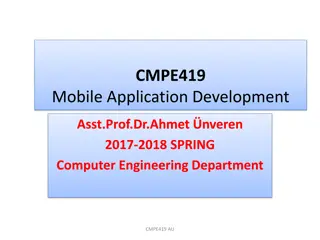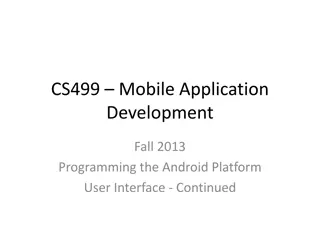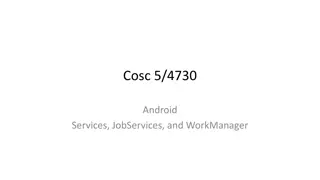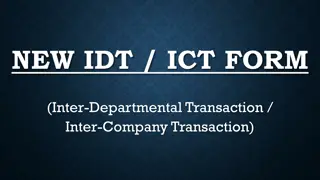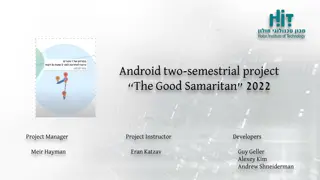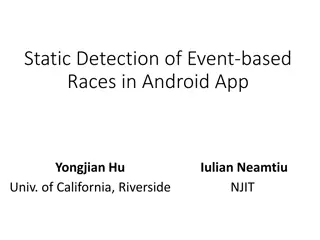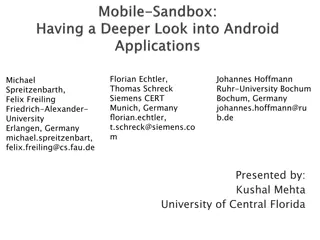Analyzing Inter-Application Communication in Android
Android's message passing system can be a potential attack surface if misused. This paper examines the complexities of Android's communication system and discusses tools like Comdroid for vulnerability detection. Learn about intent-based attack surfaces and securing applications from each other.
Download Presentation

Please find below an Image/Link to download the presentation.
The content on the website is provided AS IS for your information and personal use only. It may not be sold, licensed, or shared on other websites without obtaining consent from the author.If you encounter any issues during the download, it is possible that the publisher has removed the file from their server.
You are allowed to download the files provided on this website for personal or commercial use, subject to the condition that they are used lawfully. All files are the property of their respective owners.
The content on the website is provided AS IS for your information and personal use only. It may not be sold, licensed, or shared on other websites without obtaining consent from the author.
E N D
Presentation Transcript
Analyzing Inter-Application Communication In Android MobiSys '11 Proceedings of the 9th international conference on Mobile systems, applications, and services 2015. 4. 28 pjh61014@dankook.ac.kr
Contents Introduction Android Overview Intent-Based Attack Surface Comdroid Evaluation Conclusion References Computer Security & OS Lab. 2
Introduction Android s message passing system Can become an attack surface if used incorrectly Intent Intents can be used for both intra and inter Application communication Comdroid A tool analyzes Android applications to detect potential instance of vulnerabilities Personal data loss, corruption, phishing Computer Security & OS Lab. 3
Android Overview Android s security model differs significantly from the standard desktop security model The Complexity of Android s message passing system implies it has the largest attack surface This paper do not consider attacks on the OS Just focus on securing applications from each other Computer Security & OS Lab. 4
Android Overview Intents Provides a sophisticated message passing system System broadcast Intents Only can be sent by the OS Intent Intent Start Activity() OnCreate() Android System Activity A Activity B 1 2 3 Computer Security & OS Lab. 5
Android Overview Kind of Intent Explicit Intent specifies that it should be delivered to a particular application specified by the Intent Activity B Intent B Activity A Intent C Activity C Implicit Intent requests delivery to any application that supports a desired operation. Intent Filter Filter through Action Activity B Intent B Intent B Activity A Intent C Activity F Intent Filter Computer Security & OS Lab. 6
Android Overview Activity Display on screen Service Background process Broadcast Receiver Asynchronous event notification Broadcast Intent Normal, Ordered, Sticky Content Provider Share data between applications Use URI (Uniform Resource Identifier) Computer Security & OS Lab. 7
Android Overview A sender can assign any action, type, or category Computer Security & OS Lab. 8
Android Overview Component Declaration AndroidManifest.xml To receive Intents Service and Activity must be declared in the manifest Broadcast Receivers can be declared at runtime or in the manifest Exported Components EXPORTED flag (in AndroidManifest.xml) Includes at least one Intent filter Intent filter Action, category, data, extra data Computer Security & OS Lab. 9
Android Overview Permission Normal permissions are granted automatically. Dangerous permissions can be granted by the user during installation. Signature permissions are only granted if the requesting application is signed by the same developer that defined the permission. SignatureOrSystem m permissions are granted if the application meets the Signature requirement or if the application is installed in the system applications folder. Computer Security & OS Lab. 10
INTENT-BASED ATTACK SURFACES Broadcast Theft A malicious Broadcast Receiver could eavesdrop on all public broadcasts from all applications by creating an Intent filter that lists all possible actions, data, and categories.Dangerous Computer Security & OS Lab. 11
INTENT-BASED ATTACK SURFACES Activity Hijacking a malicious Activity is launched in place of the intended Activity. the malicious Activity could read the data in the Intent and then immediately relay it to a legitimate Activity. Service Hijacking occurs when a malicious Service intercepts an Intent meant for a legitimate initiating application establishes a connection with a malicious Service instead of the one it wanted. Computer Security & OS Lab. 12
INTENT-BASED ATTACK SURFACES Malicious Broadcast Injection If an exported Broadcast Receiver blindly trusts an incoming broadcast Intent inappropriate action or operate on malicious data from the broadcast Intent. Malicious Activity Launch Exported Activities can be launched by other applications with either explicit or implicit Malicious Service Launch If a Service is exported and not protected with strong permissions then any application can start and bind to the Service Computer Security & OS Lab. 13
ComDroid Disassemble application DEX files using Dedexer tool Parses the disassembled output and logs potential component and Intent vulnerabilities Computer Security & OS Lab. 15
ComDroid Permission Normal and Dangerous Intent Analysis Intents, IntentFilters, registers, sinks (e.g., sendBroadcast(), startActivi ty(), etc.) and components Component Analysis Public or not? Main, launching Activity is public but is less likely to be attackable With data / without data Computer Security & OS Lab. 16
Evaluation Automated Analysis False negatives Pending Intent Future work Computer Security & OS Lab. 17
Evaluation Automated Analysis Do not distinguish between paths through if and switch statements Computer Security & OS Lab. 18
Evaluation Manual Analysis Computer Security & OS Lab. 19
